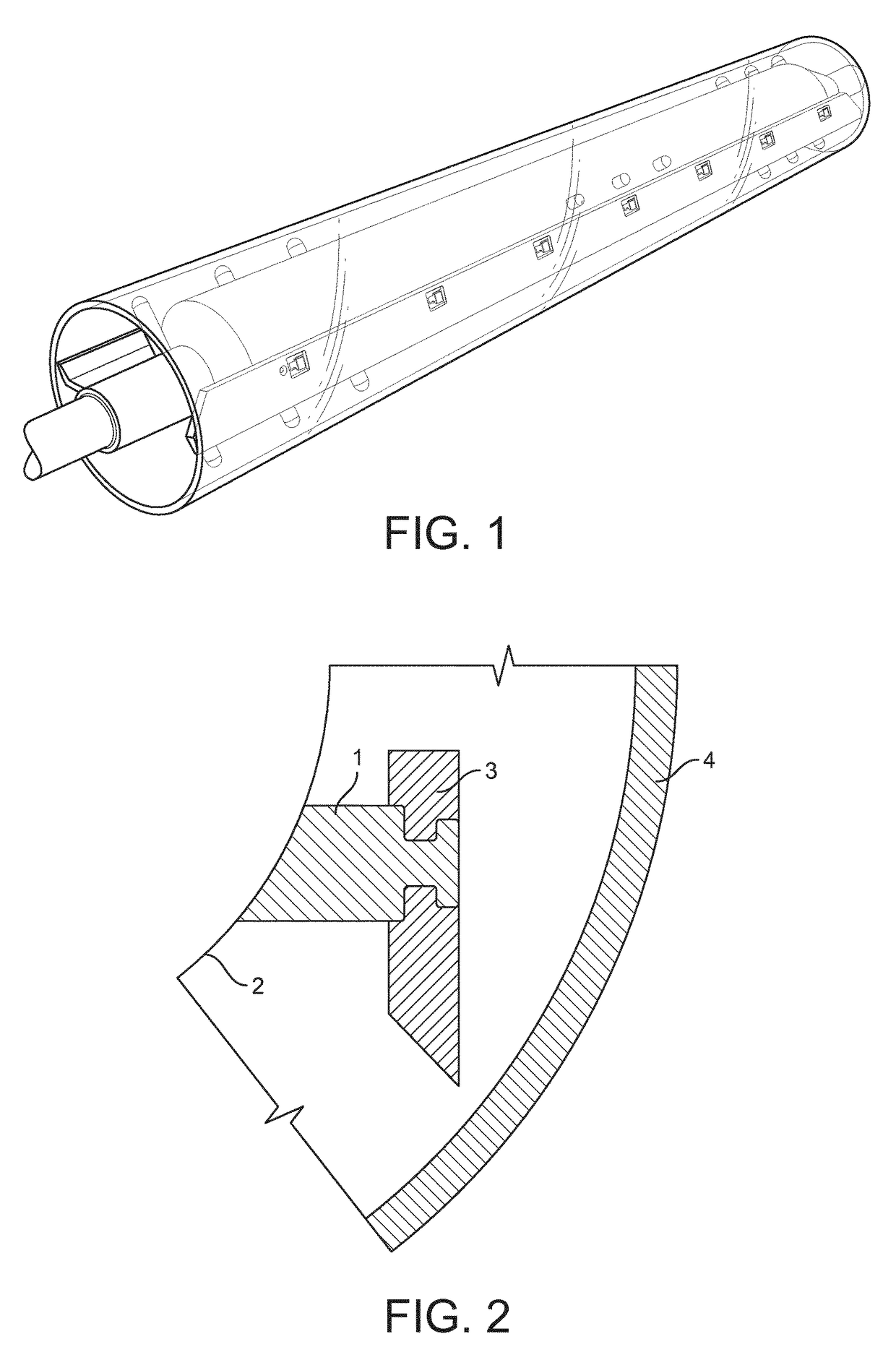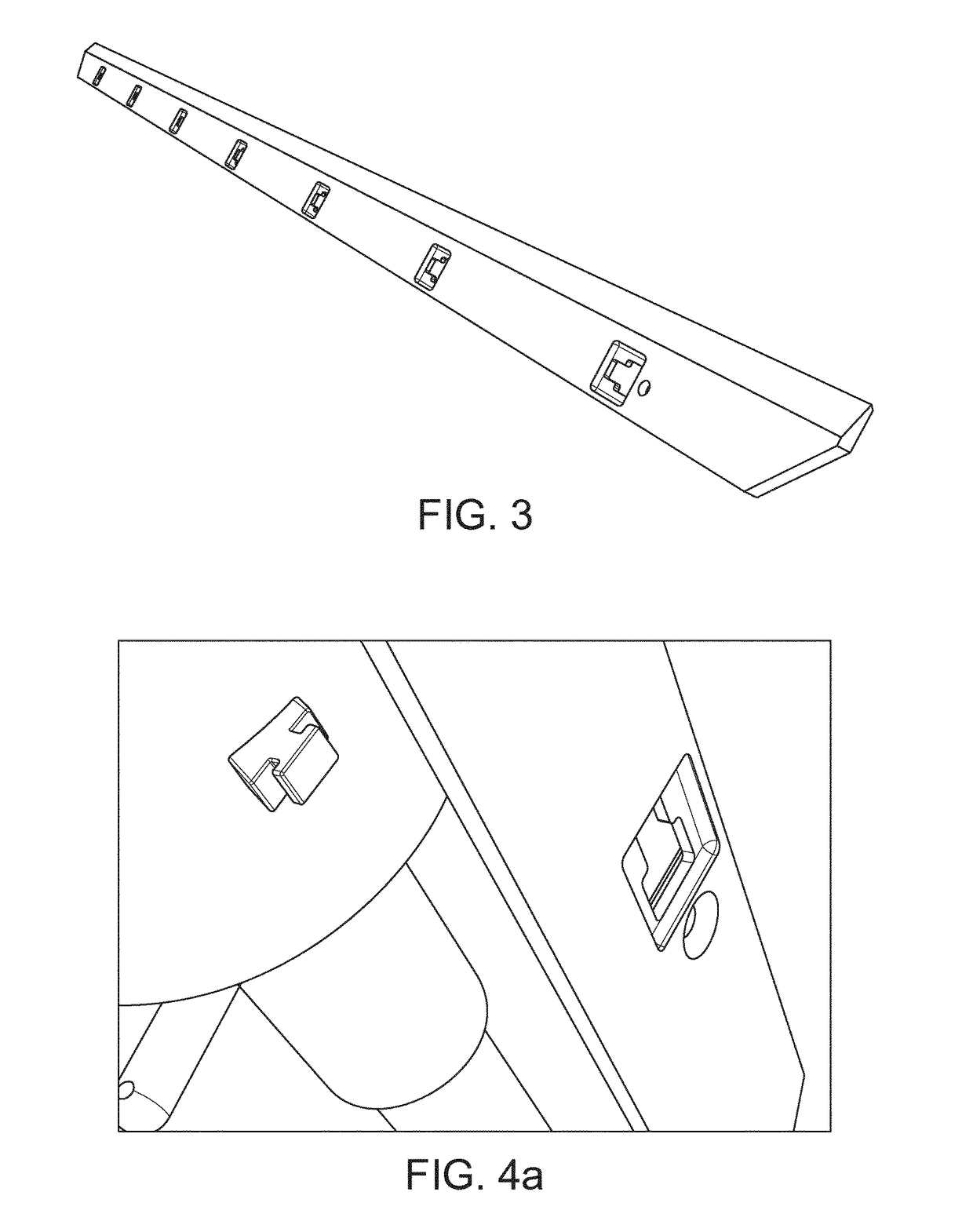Apparatus, process and use
a technology of heat exchangers and rotary devices, applied in the direction of light and heating apparatus, rotary device cleaning, sweetmeat, etc., can solve the problems of reducing scraping efficiency, undesirable thick static film, and certain disadvantages of pivoting blade scrapers described in the prior, so as to reduce the number of removable fastenings, prevent the risk of incorrect blade orientation, and reduce the risk of fastening
- Summary
- Abstract
- Description
- Claims
- Application Information
AI Technical Summary
Benefits of technology
Problems solved by technology
Method used
Image
Examples
Embodiment Construction
AND FURTHER EMBODIMENTS
[0107]As illustrated in FIG. 1 a preferred embodiment of the present invention provides a scraped surface heat exchanger comprising a cylindrical chamber having a heat exchange surface (4) through which a mixture is caused to travel. This chamber is surrounded by a jacket (X) through which a heating or cooling means may be circulated which provides heat exchange by a usual heat exchange process. At one end of the chamber is provided an inlet (X) and at its opposite end is an outlet (X) through which the mixture may pass. Inside the chamber a rotatable shaft (2) is rotatably mounted and on the rotatable shaft a longitudinal blade (3) for sweeping mixtures is securely mounted.
[0108]FIG. 2 illustrates a preferred embodiment of the present invention wherein the blade (3) with a non-contacting blade edge (X) is at a distance away from the inner surface of the heat exchange surface (X). The rotatable shaft (2) and the inner surface of the heat exchange surface (X) a...
PUM
 Login to View More
Login to View More Abstract
Description
Claims
Application Information
 Login to View More
Login to View More - R&D
- Intellectual Property
- Life Sciences
- Materials
- Tech Scout
- Unparalleled Data Quality
- Higher Quality Content
- 60% Fewer Hallucinations
Browse by: Latest US Patents, China's latest patents, Technical Efficacy Thesaurus, Application Domain, Technology Topic, Popular Technical Reports.
© 2025 PatSnap. All rights reserved.Legal|Privacy policy|Modern Slavery Act Transparency Statement|Sitemap|About US| Contact US: help@patsnap.com



